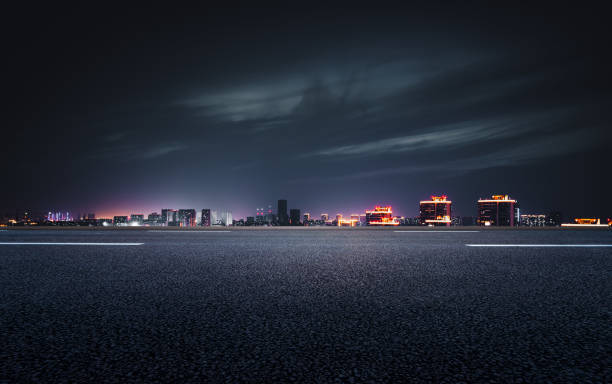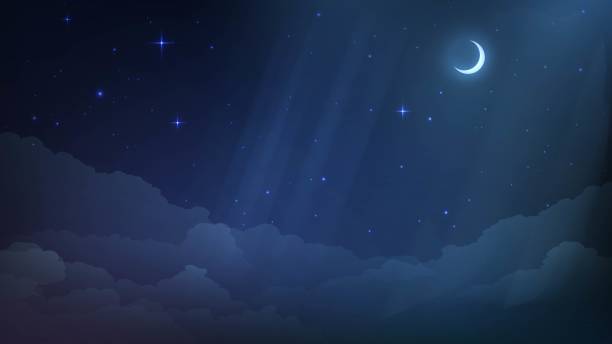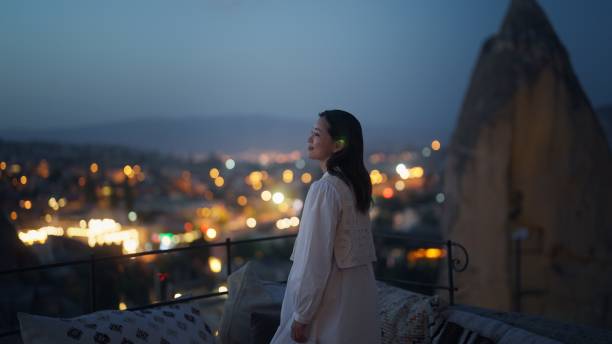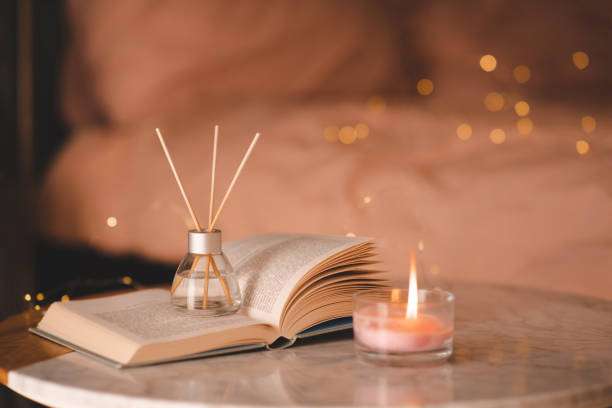How To Describe Night In Writing (10 Best Ways)
In the realm of storytelling, the night is a canvas painted with shades of mystery, romance, and introspection.
Capturing the essence of the nocturnal world through the art of description is a literary endeavor that transcends mere depiction; it is an invitation for readers to immerse themselves in the atmospheric allure of darkness.
Describing night in writing goes beyond the absence of daylight; it delves into the profound symbolism, sensory intricacies, and emotional nuances that unfold when the sun sets.
In this exploration, we embark on a journey to unravel the techniques that transform night into a compelling character, shaping narratives with the subtle strokes of descriptive language, symbolism, and the evolving atmosphere.
Join the nocturnal odyssey as we delve into the artistry of portraying the night in all its enigmatic splendor.
How To Describe Night In Writing
Describing night in writing involves capturing the sensory elements and creating a vivid atmosphere. Here’s a step-by-step process:
Observe the Setting
Start by observing the night setting you want to describe. Note the surroundings, the moon’s phase, stars, and any unique features.
Identify Key Senses
Consider the senses you want to emphasize – sight, sound, smell, touch. Night descriptions often involve darkness, subtle lighting, cool temperatures, and distinct sounds.
Focus on Visuals
Begin with visual details. Describe the moon, its glow, or lack thereof. Note any shadows, silhouettes, or shimmering lights. Paint a picture of the sky, stars, and the overall atmosphere.
Play with Colors
Utilize color imagery to evoke emotions. Describe the night sky as inky black, navy blue, or velvety indigo. Highlight any splashes of color from celestial bodies or artificial lights.
Capture Sounds
Move on to auditory details. Highlight the quietness, distant sounds like rustling leaves or nocturnal creatures, or urban noises. Use onomatopoeic words to enhance the auditory experience.
Incorporate Smells
Explore olfactory elements, if applicable. Mention scents carried by the night breeze, such as earthiness, floral fragrances, or even distant cooking smells.
Describe Temperature
Discuss the temperature of the night. Is it crisp and cool, or muggy and warm? Convey the sensation of the air on the skin to immerse the reader in the setting.
Use Metaphors and Similes
Enrich your description with metaphors and similes. Compare the night to something familiar or use figurative language to evoke a specific mood or feeling.
Consider the Setting’s Influence
Reflect on how the night setting influences the mood or actions of characters, if applicable. A moonlit night might create a romantic atmosphere, while a dark and stormy night might evoke tension.
Craft a Seamless Narrative
Weave these elements into your narrative seamlessly. Avoid overwhelming the reader with too many details at once, and ensure your descriptions serve the overall tone and theme of your writing.
Remember, the key is to engage the reader’s senses and emotions, allowing them to experience the night through your words.

Setting the Scene
As the sun dipped below the horizon, the world underwent a transformative dance, shrouding itself in the mystique of the night.
The landscape, once awash in the golden hues of daylight, succumbed to the velvet embrace of darkness. The moon, a silent maestro, cast its silvery glow upon the earth, conjuring a dreamscape where reality and imagination intertwined.
Shadows, like enigmatic dancers, pirouetted across the canvas of the night, tracing the contours of hidden secrets.
The air, now a symphony of nocturnal whispers, held the promise of undiscovered tales waiting to unfold. In this nocturnal theater, time itself seemed to stretch and contract, creating a liminal space where the extraordinary became plausible, and the ordinary, extraordinary.
Establishing the time and place
As the clock’s hands embraced the midnight hour, the world hushed into a stillness reserved exclusively for the nocturnal.
The setting, a quaint hamlet nestled between ancient hills and sleepy meadows, wore the moonlight like a silken cloak.
The air, crisp and cool, bore the distinctive fragrance of dew-kissed grass. The village, steeped in a timeless charm, echoed with the distant murmurings of a nearby stream.
The rhythmic cadence of crickets underscored the unfolding night, orchestrating the passage of time with their unseen serenade.
This was not just a specific moment; it was a temporal crossroads where the magic of night met the tangible reality of a place suspended in its own enchantment.
Sensory Imagery
As the inky night unfurled its obsidian wings, the world transformed into a sensory symphony, weaving a tapestry of sensations that transcended the mundane.
Moonbeams, like liquid silver, painted a celestial mural overhead, casting a spell that danced upon the eyes. The night air, cool and velvety, carried with it the whispers of secrets, an olfactory sonnet that blended the earthy perfume of soil with the ethereal fragrance of blooming night flowers.
Each step on the nocturnal path was a tactile exploration, the ground yielding with a gentle sigh as if sharing the stories it cradled.
The orchestration of nocturnal creatures, from the haunting calls of distant owls to the rustle of unseen critters, resonated through the bones, a harmonic convergence of nature’s nocturnal opera.
In this symphony of the senses, the night unfolded not just as an absence of light but as a rich, multi-dimensional experience where every perception became a brushstroke in the masterpiece of the moonlit hours.
Visual Descriptions
Under the night’s cosmic theatre, visual poetry unfolded with the grace of a celestial ballet. The moon, a luminescent guardian, painted the world in silver strokes, casting enchanting shadows that waltzed with the slightest breeze.
Stars, like diamonds strewn across a velvet canvas, sparkled with ethereal brilliance, their patterns telling ancient tales written in constellations.
Wisps of clouds, veiled in obsidian mystery, traversed the heavens like spectral dancers in an ever-changing choreography.
The landscape below, bathed in the soft glow of lunar radiance, revealed hidden details – the glistening dew on blades of grass, the reflective eyes of nocturnal creatures, and the stoic silhouettes of towering trees.
In the quietude of the night, the visual tapestry unfolded, inviting the observer to lose themselves in the mesmerizing spectacle of shadows and silvery luminescence, where reality and dreams coalesced in a nocturnal embrace.
Emotional Atmosphere
In the tender cradle of night, emotions swirled like phantom dancers, casting their spell on the tapestry of darkness.
The moon, a silent confidante, witnessed the kaleidoscope of feelings that emerged beneath its gentle gaze. The night, a canvas for the soul’s expression, wore the cloak of mystery with grace.
It was not merely the absence of daylight; it was a sanctuary for introspection, a refuge for the introspective minds to delve into the depths of their own emotions.
Loneliness, tinged with the sweet melancholy of solitude, coexisted with the thrill of nocturnal secrets waiting to be unraveled.
Serenity intertwined with a quiet chaos, and the night became an emotional alchemy, where each heartbeat echoed against the velvet sky, composing a nocturne of emotions that spoke to the very core of the human experience.

Creating a mood through word choice and tone
In the realm of night, the power of language becomes a magicians’ wand, conjuring moods that dance on the precipice of enchantment.
Words, carefully selected, cast a spell that transcends mere description, immersing the reader in the emotive chiaroscuro of the nocturnal canvas.
The tone, a maestro orchestrating the symphony of emotions, guides the reader through the moonlit corridors of anticipation, weaving a tapestry where each adjective is a brushstroke, and every sentence a musical note.
The night, draped in an opulent lexicon, can be a sultry seductress or a solemn sage, depending on the alchemy of word choice and tone.
It is the subtle interplay of consonants and vowels that transforms the mundane into the extraordinary, painting the atmosphere with hues of mystery, serenity, or palpable tension.
As the words unfurl like tendrils of mist in the midnight air, they invite the reader to not just witness the night but to feel its pulse, creating an immersive experience where language becomes a vessel for the soul of the nocturnal.
Symbolism and Metaphor
In the nocturnal tapestry, the interplay of symbols and metaphors is a celestial ballet, where the ordinary becomes a constellation of hidden meanings.
The moon, a metaphorical lantern in the cosmic dark, doesn’t merely illuminate; it becomes a silent confidante, casting shadows that dance like metaphorical whispers of ancient tales.
Stars, those celestial hieroglyphs, inscribe a narrative on the vast scroll of the night sky, each one a metaphorical punctuation mark in the poetry of existence.
The night itself, a canvas for dreams, is a metaphorical cocoon where reality transforms into the ephemeral butterfly of imagination.
In this nocturnal sanctuary, every rustle of leaves and every gust of wind is laden with symbolic resonance, turning the act of perception into an intricate dance with the metaphysical.
The symbols and metaphors, like cosmic breadcrumbs, invite the reader to embark on a journey through the labyrinth of meaning, where the night becomes a canvas for the reader’s own introspective exploration.
Using night as a symbolic element
The night, a ubiquitous yet enigmatic character in the narrative of existence, dons the cloak of symbolism, transcending its physical realm to become a metaphorical maestro orchestrating the symphony of deeper meanings.
It is the cosmic chalice of mysteries, where darkness isn’t merely the absence of light but a metaphor for the uncharted territories of the human psyche.
The nocturnal hours become a symbolic canvas, painting the complexities of life, where shadows aren’t just absence but embodiments of hidden truths.
The moon, a luminary sentinel in the night, becomes a symbol of cyclical renewal and eternal rhythms. The stars, like distant dreams, twinkle as symbolic aspirations in the vast tapestry of the universe.
Night, as a symbolic element, beckons the reader to delve beyond the surface, inviting contemplation on the dualities of life, the veiled beauty in obscurity, and the profound symbolism that weaves through the celestial fabric of existence.
Character Interaction with the Night
Beneath the cosmic theater of the night, characters don’t merely exist; they are alchemists, concocting elixirs of emotion in the moonlit crucible.
Each step is a dance with shadows, and every heartbeat resonates with the nocturnal symphony. The night is not a backdrop but a silent confidante, witnessing the whispered secrets and unspoken fears that characters dare not reveal in the harsh light of day.
Whether it’s the protagonist seeking solace in the velvet embrace of darkness or the antagonist cloaked in the ambiguity of shadows, the night becomes an intimate accomplice to their innermost struggles.
The stars are not just celestial bystanders; they are the audience to the characters’ silent soliloquies, while the moon, a cosmic mirror, reflects the myriad emotions etched across their faces.
In the nocturnal ballet, characters don’t navigate the night; they immerse themselves in its depths, each interaction a delicate choreography that leaves an indelible mark on the canvas of their existence.
Integrating characters into the nighttime setting
As the sun’s radiance retreated, characters became interwoven threads in the intricate fabric of the nocturnal tapestry.
Their silhouettes, framed against the indigo backdrop, carried the weight of both secrets and vulnerabilities. Nighttime was not just a setting; it was a companion to their solitude, a confidant to their whispered hopes and fears.
Each footfall on the dew-kissed ground echoed the cadence of their journey, and every stolen glance beneath the moonlight held the promise of clandestine revelations.
The characters weren’t mere spectators to the night; they were active participants, navigating the shadows with a nuanced dance of emotions.
Whether driven by the pursuit of elusive dreams or haunted by the specters of the past, the night embraced them in its inky bosom, revealing facets of their personalities that daylight dared not expose.
In this symbiotic relationship between characters and the nighttime setting, the narrative unfolded as a nocturnal odyssey, where the darkness became both a sanctuary and a crucible, shaping the characters in its mysterious forge.

Narrative Techniques
In the nocturnal realm where stories unfold like constellations in the cosmic tapestry, narrative techniques are the alchemical spells that transform mere words into ethereal experiences.
The prose, a celestial navigator, charts a course through the vast sea of night, employing metaphors as North Stars and similes as guiding constellations.
Pacing, like a heartbeat echoing through the narrative, quickens in suspenseful crescendos and mellows in contemplative interludes, orchestrating a symphony of emotions.
Sentence structures are not mere grammatical constructs; they are architectural marvels, crafting moonlit archways through which readers traverse the labyrinth of the plot.
Flashbacks become time-traveling portals, allowing characters to dance between the past and present in a waltz of memory.
In this literary cosmos, the interplay of narrative techniques is not just a means of storytelling; it is the very essence of the night, where the language becomes a celestial chariot propelling readers into the uncharted realms of imagination.
Employing descriptive language and literary devices
In the realm of night, descriptive language and literary devices unfurl like the tendrils of ivy, embracing the reader in a tapestry of vivid imagery and emotive resonance.
Words aren’t mere vessels of meaning; they are alchemical agents that transmute the mundane into the magical. Metaphors, like fireflies, dance in the velvety prose, casting a soft glow on the intricacies of the night.
Similes are celestial bridges connecting the familiar to the fantastical, while personification breathes life into the silent whispers of the nocturnal breeze.
Descriptive language, akin to a painter’s brush, strokes the canvas of the narrative with hues of emotion, detailing the contours of moonlit landscapes and the ephemeral beauty of night creatures.
Each adjective is a palette choice, each adverb a nuanced brushstroke, and every literary device a finely tuned instrument in the symphony of storytelling.
In this celestial dance of language, the night becomes not just a setting but an immersive experience, where the reader doesn’t observe but tangibly feels the magic woven into the very fabric of the prose.
Evolving Atmosphere
As the night unfolded its wings, the atmosphere morphed into a living entity, a chameleon that embraced metamorphosis with each passing moment. Moonlight, initially a shy whisper, transformed into a luminous ballad, its glow waxing and waning in a celestial rhythm.
Stars, like shy spectators, blinked in and out, altering the cosmic audience’s intensity. The air, once a still canvas, began to shiver with the nocturnal secrets it harbored, as if the very breath of the night held tales waiting to exhale.
Clouds, nomadic wanderers in the sky’s expanse, choreographed a dance that veiled and unveiled the moon’s luminous countenance.
The evolving atmosphere wasn’t just a backdrop; it was a character in its own right, an unseen force sculpting the narrative with the subtle touch of a cosmic artisan.
In the ever-shifting nocturnal tableau, the atmosphere became a silent storyteller, etching its own verses into the fabric of the night.
Describing the progression of the night
As the night unfolded its mysterious manuscript, it embarked on a poetic journey of progression, a narrative written in the ink of shadows and stardust.
The twilight’s last sigh marked the inception, a transitional phase where the sky, a canvas in transition, surrendered its vibrant hues to the encroaching darkness.
The initial hush of nocturnal awakening resonated through the air, a prelude to the symphony of crickets and night creatures tuning their instruments.
With the ascent of the moon, the narrative gained momentum, casting a silver glow on the evolving landscape.
Stars, like punctuation marks, appeared one by one, illuminating the cosmic syntax of the night. The zenith of the night unveiled a panorama of celestial wonders, each passing hour etching its own stanza in the celestial sonnet.
The descent toward dawn became a gradual unveiling, a reverse metamorphosis where shadows relinquished their hold, and the world emerged from the cocoon of darkness into the tentative embrace of a new day.
In this chronological dance, the progression of the night became a temporal tapestry, weaving the reader through the ebb and flow of nocturnal wonders.
Frequently Asked Questions about How To Describe Night In Writing
What elements should I focus on when describing night in writing?
When describing night, pay attention to visual details such as the moon, stars, and shadows. Explore auditory elements like sounds in the night, consider the temperature, and incorporate sensory experiences like smells and touch.
How can I effectively convey the visual aspects of the night in my writing?
Use vivid imagery to depict the night sky, emphasizing the moon’s glow, star patterns, and the overall atmosphere. Experiment with colors like inky black, navy blue, or velvety indigo to evoke the mood of the night.
What role do sounds play in creating a night scene?
Sounds are crucial in conveying the ambiance of the night. Describe quietness, distant rustles, nocturnal creature noises, or urban sounds. Consider using onomatopoeic words to enhance the auditory experience.
Should I include smells when describing a night setting?
Including smells can add depth to your description. Consider scents carried by the night breeze, such as earthiness, floral fragrances, or distant cooking smells, to enhance the reader’s sensory experience.
How do I capture the temperature of the night in my writing?
Describe the temperature by conveying whether the night is crisp and cool, muggy and warm, or somewhere in between. Discuss the sensation of the air on the skin to immerse the reader in the setting.
Can I use metaphors and similes to enhance my description of the night?
Absolutely! Metaphors and similes can enrich your writing. Compare the night to something familiar or use figurative language to evoke specific moods or feelings associated with the night.
How do I avoid overwhelming the reader with night descriptions?
Craft a seamless narrative by introducing details gradually. Ensure your descriptions serve the overall tone and theme of your writing, and avoid overcrowding your prose with too many details at once.
How can I make the night setting influence the overall mood of my writing?
Reflect on how the night setting influences the characters or the atmosphere. For instance, a moonlit night might create a romantic ambiance, while a dark and stormy night could evoke tension or suspense in your narrative.
Conclusion
In conclusion, describing night in writing is an art that engages the reader’s senses and emotions to create a vivid and immersive experience.
By focusing on visual elements such as the moon and stars, incorporating auditory details like distant sounds, exploring smells carried by the night breeze, and conveying the temperature, writers can paint a rich and atmospheric picture of the night.
Utilizing metaphors, similes, and careful narrative crafting allows for a seamless integration of these elements, enhancing the overall mood of the writing.
Remember, the beauty of describing night lies in the delicate balance of details that transport the reader into the enchanting realm of darkness, making it a compelling and memorable aspect of any narrative.






